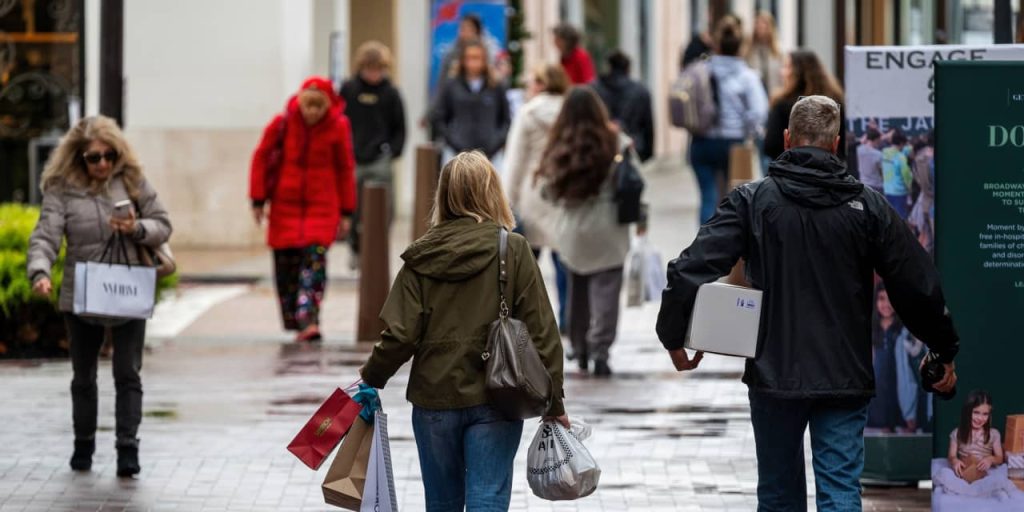Overall prices fell last month from October, marking the first decline since 2020, while the Federal Reserve’s preferred inflation metric cooled more than expected, in a development that can only be cheered by central bank officials looking for a sustained slowdown in price growth.
From October to November, the headline personal consumption expenditures price index declined by 0.1% in the first negative result since April 2020, according to data released Friday by the Bureau of Economic Analysis.
That was better news on inflation than economists surveyed by
FactSet
anticipated. They expected prices remained flat from October to November, with no change in the PCE index, as a result of falling gasoline prices.
The overall PCE inflation rate was 2.6% year over year, also a more favorable number than the 2.8% pace that economists had expected for November, according to FactSet data. It was down even from the revised 2.9% pace recorded in October.
The Fed’s preferred inflation gauge, the core personal consumption expenditures price index, which excludes the more volatile costs of food and energy, also showed progress. Considered a better indicator of underlying inflation trends than the so-called headline data, core PCE grew by 3.2% on a year over year basis in November. Economists had anticipated core PCE would rise 3.4% last month, the same as the revised 3.4% rate recorded in October.
On a monthly basis, core PCE rose by 0.1%. Economists expected core PCE would hold steady at roughly 0.2% in November, the same pace clocked in October.
Friday’s report could bolster support for the bank to reduce borrowing costs sooner than it might have otherwise. In a sign of major progress toward bringing annual price growth back to the Fed’s 2% target, November’s result means the six-month annualized core PCE is at 1.87%, tweeted Mike Konczal, director of macroeconomic analysis at the Roosevelt Institute. Bloomberg Economics had forecast that November core PCE would hit 2% on a six-month annualized basis.
“I was cautiously optimistic about 2023…but this disinflation is far beyond what I imagined,” Konczal wrote Friday morning.
That progress could raise expectations that the Federal Reserve could lower interest rates as soon as March. Yet Fed officials forecast that it will take core PCE inflation until 2026 to sustainably return to 2%, according to the summary of economic projections released at last week’s meeting of the Federal Open Market Committee.
And core PCE is still running at a 2.16% annualized rate over the three months through November, calculated Liz Ann Sonders, Schwab’s chief investment strategist.
The Federal Open Market Committee,which handles monetary policy, may not be ready to declare victory on inflation yet, but the outlook is much better than it was just a few months ago, wrote Gus Faucher, PNC’s chief economist.
The bureau said Friday it revised its estimates for data from July through October, including PCE and current-dollar personal income figures.
The November data show a mixed picture. Prices for services continued to grow, even as goods prices showed an outright decline driven by lower gasoline costs. Services inflation was up 4.1% year over year in November, while prices for goods decreased 0.3% On a monthly basis, goods deflation was 0.7% and prices for services increased 0.2%.
Food prices increased 1.8% year over year, but that was offset by energy prices decreasing 6% compared with a year ago, the bureau reported. From October to November, food and energy price indexes fell by 0.1% and 2.7%, respectively.
Consumer spending, meanwhile, picked up steam slightly last month as Black Friday and Cyber Monday deals tempted Americans to shop ahead of the holidays. Personal consumption expenditures were up 0.2%, or $46.7 billion, a slightly faster pace than the 0.1% monthly uptick recorded for October.
Yet even as shoppers spent, savings ticked up slightly. The personal saving rate—the money set aside as a percentage of disposable personal income—was 4.1% in November, up slightly from the 4% rate in October. While the saving rate inched higher earlier this year, it was below 4% through most of 2022. People may be saving a bit more now, but the rate s still below the prepandemic level of around 7%.
The rise in savings—and spending—is likely due, in part, to the fact that personal incomes increased 0.4% in November. Wages and salaries increased, the bureau reported.
That real incomes are rising is a good indication that consumption will likely remain strong, a positive sign for the overall U.S. economy, wrote Sonu Varghese, global macro strategist at Carson Group. Rates cuts next year, if they happen, would be an additional boost for cyclical sectors like housing.
“The U.S. economy is doing well heading into 2024,” PNC’s Faucher wrote, noting that the slowing in core inflation makes rate cuts more likely. When they happen will depend on core PCE numbers over the next few months.
Write to Megan Leonhardt at megan.leonhardt@barrons.com
Read the full article here



